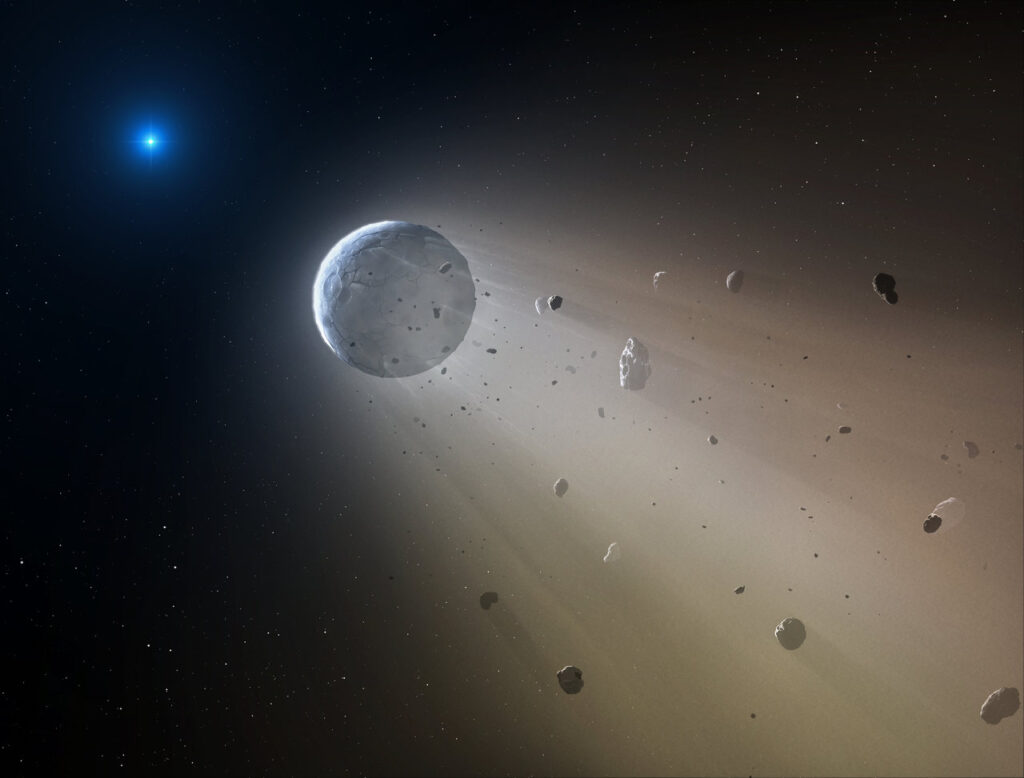A team of American astronomers has found traces indicating the possible existence of an exoplanet. It orbits a white dwarf close to the Solar System.

The discovery was made while analyzing data collected by the James Webb Space Telescope (JWST). It managed to detect an excess of infrared radiation coming from the white dwarf WD 0310-688.
WD 0310-688 is located at a distance of 33.9 light-years from the Sun. Its mass is 0.66 solar masses. According to astronomers’ estimates, WD 0310-688 became a white dwarf about 200 million years ago.
Until recently, WD 0310-688 didn’t attract much attention from astronomers. But then traces of oxygen, silicon, magnesium, and iron were found in its spectrum. This indicates the absorption of matter, which is rich in heavy elements, by the dwarf. Its source may be the debris disk surrounding the dwarf, which consisted of matter from an exoplanet destroyed during the red giant stage.

During the observations, JWST was able to detect an excess of infrared emission at medium wavelengths from WD 0310-688. Its source may be a debris disk. However, if the amount of radiation they emit is to match the JWST observations, it must have rather specific parameters (being extremely thin and observed by us almost from the edge).
Therefore, astronomers also have an alternative version, which seems preferable to them at the moment. They believe there may be a large exoplanet in orbit around WD 0310-688. We are talking about a gas giant with a radius equal to that of Jupiter and a mass three times greater than its mass. The presence of such an exoplanet helps explain the excess of infrared radiation.
It is true that there is a certain problem with this interpretation as well. The fact is that the orbit of the gas giant must pass at a distance of 0.1 to 2 a.e. from the dwarf — and it is not quite clear how, at such a small distance, it managed to survive the red giant phase. Astronomers assume that after the dying star shed its atmosphere, the exoplanet migrated to a closer orbit. It is possible that observations of other white dwarfs will provide an answer to this question.
Earlier we told you about how astronomers managed to find an Earth-like exoplanet near another white dwarf.
According to iopscience.iop.org


